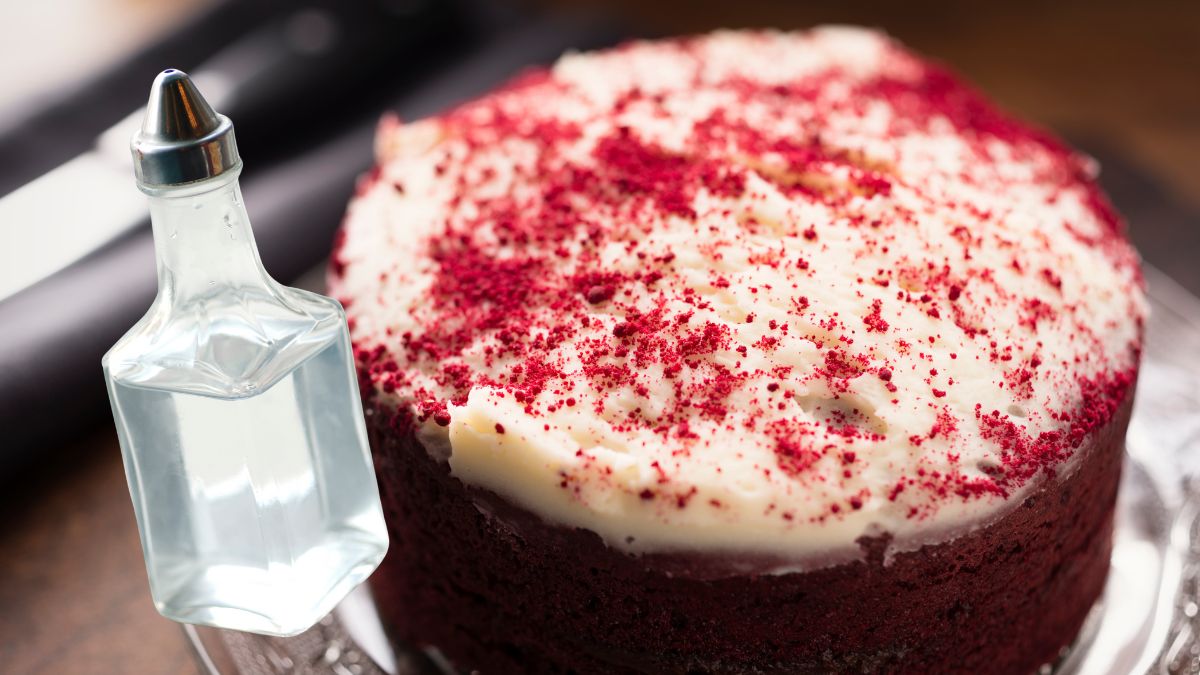Substitutes for Vinegar in Red Velvet Cake [3 Best Options]

As a lover of red velvet cake, I was devastated when I discovered that vinegar was essential to the recipe. I had always thought it was just an interesting flavor addition. Why is vinegar used in red velvet cake? What are some alternatives to using vinegar in red velvet cake? After doing some research, I have found the answers to these questions, and I am glad to tell you all about substitutes for vinegar in red velvet cake. So, what’s the best substitute for vinegar in a red velvet cake?
If you don’t have vinegar for red velvet cake, you can try buttermilk, lemon juice, or cream of tartar for an even more unique flavor. Whichever option you use, you should make sure to add some baking soda, and you are good to go.
This article will help you understand the different types of acids that you can use in place of vinegar in red velvet cake. Each of these alternatives has a slightly different flavor and reactivity from the other ingredients, so you’ll want to do a bit of testing to see which one gives you the best results.
Why Do You Add Vinegar to Red Velvet Cake?
There is a reason for adding vinegar to this classic dessert, and the reason is science! The primary purpose of adding vinegar to red velvet cake is to react with the baking soda and cocoa powder to create a reddish hue and tangy flavor. The vinegar is actually what gives red velvet cake its signature tangy flavor. This is because vinegar is a sour ingredient, which helps balance out the sweetness of the sugar and the chocolate.
Lastly, vinegar is added to red velvet cake because it helps to activate the baking soda. This is important because it helps leaven the cake and make it rise. The cake may rise improperly without vinegar and may become dense or gooey.
What to Use Instead of Vinegar in Red Velvet Cake?
While adding vinegar is a classic red velvet cake recipe, some people prefer to substitute it with a few alternatives. Don’t worry; you will definitely get that same flavor profile in your cake.
All of these substitutes work well because they are acids that will add flavor and help activate the baking soda. They also work to create a fluffy, tender crumb in your cake. So if you don’t have vinegar on hand or just don’t want to use it, don’t worry – you have plenty of other options.
Buttermilk
Buttermilk is my go-to choice to replace vinegar in a red velvet recipe. It has a sour, acidic taste that works well with all the other flavors.
To substitute for vinegar in red velvet cake with buttermilk, you’ll need one cup of buttermilk for every tablespoon of vinegar called for in the recipe. Before that, mix the buttermilk and baking soda together until the baking soda is dissolved, then add it to the recipe as directed.
And here’s how you can make a red velvet sponge cake with buttermilk:
Lemon Juice
Another option is lemon juice or lime juice. These citrus fruits have a sour, acidic taste that will give your cake the desired flavor.
Whenever I’m substituting with lemon juice, I use one tablespoon for every tablespoon of vinegar called for in the recipe.
Additionally, you’ll need to add an extra 1/2 teaspoon of baking soda to the recipe when substituting lemon juice for vinegar. This is because lemon juice is less acidic than vinegar and therefore requires a little more baking soda to help the cake rise and achieve a fluffy texture.
Cream of Tartar
When it comes to replacing vinegar in red velvet cake, my weapon of choice is cream of tartar. Cream of tartar, derived from tartaric acid and has a slightly lemony flavor, works perfectly as a substitute for vinegar because it helps give the pudding a nice rise and tenderizes the cake.
If you’re using the cream of tartar as an alternative to vinegar, reduce the quantity by half. For example, if you were using 1 teaspoon of vinegar in a recipe, you only need to use 1/2 teaspoon of cream of tartar. I also like to add 1/4 teaspoon of baking soda when substituting with cream of tartar to get the same effect as one would with 1 teaspoon of vinegar.
Take care while adding cream of tartar so you don’t end up with an overly-sour taste. When adding this ingredient in place of vinegar, always make sure that there’s enough liquid content in the recipe for it not to overpower the sweet elements and create a balanced taste.
Have you ever had to substitute for vinegar in a red velvet cake? I would love to read all about the end results in the comments below!

